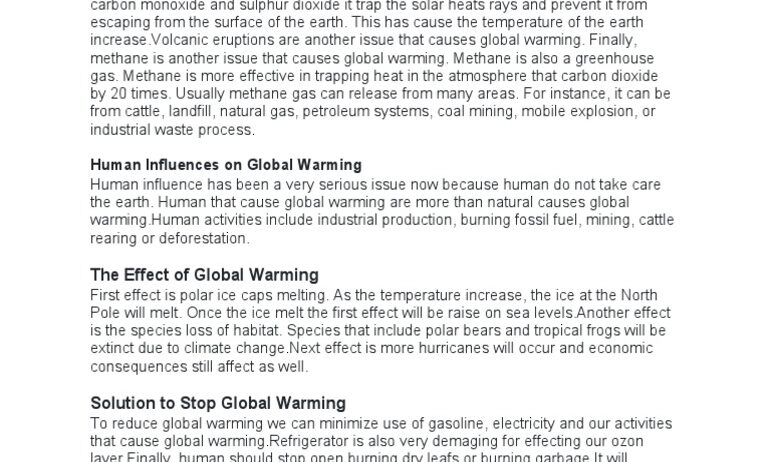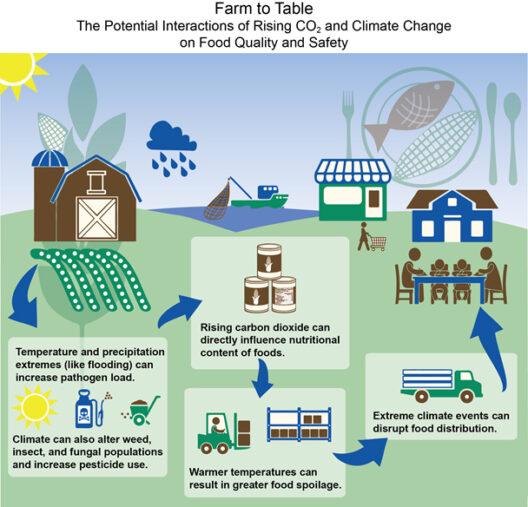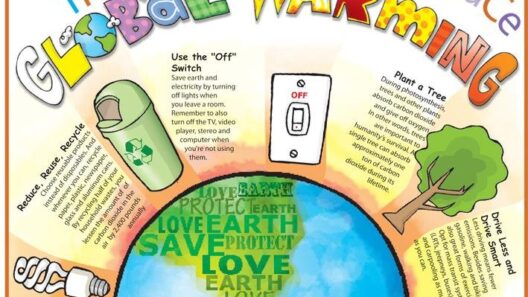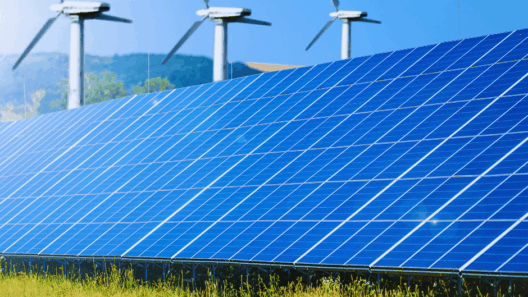Global warming has emerged as one of the most pressing issues of our time, capturing the attention of scientists, policymakers, and the general public alike. At the heart of this phenomenon lies a complex interplay of numerous factors, with human activities playing a pivotal role. To understand the main cause of global warming, it is essential to dissect the primary drivers of climate change and explore their implications on our environment and society.
Understanding the Greenhouse Effect
The greenhouse effect is a natural process that warms the Earth’s surface. When the sun’s energy reaches our planet, some of it is reflected back to space, and the rest is absorbed and re-radiated by greenhouse gases in the atmosphere. These gases include carbon dioxide (CO2), methane (CH4), nitrous oxide (N2O), and water vapor, among others. This process is critical for maintaining temperatures that support life; without it, Earth would be inhospitably cold.
However, human activities have drastically altered the concentration of greenhouse gases in the atmosphere. The burning of fossil fuels such as coal, oil, and natural gas for electricity, heat, and transportation has significantly increased CO2 levels. Deforestation, agriculture, and industrial processes further contribute to the release of these gases, exacerbating the issue. Research indicates that the current concentration of CO2 in the atmosphere is at its highest level in over 400,000 years, a clear indicator of the unnatural pace of climate change.
The Role of Carbon Dioxide in Climate Change
Carbon dioxide is perhaps the most recognized contributor to global warming. Accounting for nearly three-quarters of emissions, its lingering presence in the atmosphere makes it a formidable climate driver. CO2 not only arises from fossil fuel combustion, but it also results from land use changes, such as deforestation and soil degradation. With forests acting as carbon sinks, their destruction releases stored carbon back into the atmosphere, compounding the overall levels of this crucial greenhouse gas.
Evidence suggests that the concentration of carbon dioxide has increased by more than 40% since the beginning of the Industrial Revolution. The ramifications of this surge are profound, as higher CO2 levels lead to increased atmospheric and ocean temperatures, resulting in a cascade of environmental changes including intensified weather patterns, rising sea levels, and disruption of ecosystems.
Methane: The Potent Greenhouse Gas
While carbon dioxide garners significant attention, methane represents another critical player in the climate change arena. Although it is present in smaller quantities, methane is over 25 times more effective than CO2 at trapping heat over a 100-year period, making it a dangerously potent greenhouse gas. Sources of methane emissions include agricultural practices, particularly livestock digestion (enteric fermentation), and the extraction and transport of fossil fuels.
A particular concern is the methane released from permafrost as it melts due to warming temperatures. This feedback loop threatens to accelerate climate change beyond current predictions, highlighting the need for immediate action. Addressing methane emissions is pivotal; reducing them by as little as 50% over the next couple of decades could mitigate some of the worst impacts of climate change.
Deforestation and Land Use Changes: A Dual Challenge
Deforestation and alterations in land use represent dual challenges in combating climate change. With the planet’s forests constantly diminishing due to logging, urban sprawl, and agricultural expansion, the ability of these ecosystems to act as carbon sinks is compromised. These changes lead not only to increased CO2 emissions but also to the loss of biodiversity and habitat degradation.
The link between land use and climate change is multifaceted. Agricultural practices that prioritize monoculture and industrial farming exacerbate soil erosion and reduce the land’s ability to sequester carbon. Sustainable agricultural practices, including reforesting efforts and permaculture, provide a pathway to restore the ecology while contributing positively to carbon management.
Industrial Practices and Their Impact on Climate
The industrial sector is another significant contributor to global warming. Processes involved in manufacturing, construction, and energy generation emit considerable greenhouse gases. Factories that rely on coal-fired power plants not only contribute CO2 emissions but also release other harmful pollutants, compounding health risks for communities nearby.
Furthermore, waste management practices, particularly in landfills, generate methane emissions as organic waste decomposes anaerobically. Transitioning to cleaner production technologies and improving waste management systems is imperative for mitigating the industrial sector’s impact on climate change.
Climate Change Awareness and Action
Addressing the intricacies of climate change requires a multipronged approach. Raising awareness is crucial; individuals should be educated about the impact of their choices and encouraged to adopt more sustainable practices. Policymakers must prioritize the adoption of renewable energy sources such as wind, solar, and hydropower while incentivizing the reduction of greenhouse gas emissions across all sectors.
Global cooperation is indispensable as well. Climate change knows no borders; thus, international agreements like the Paris Accord aim to unify global efforts in combatting this existential threat. Achieving net-zero emissions by the mid-century mark is a shared responsibility that necessitates innovation, accountability, and perseverance from every nation.
In conclusion, the primary drivers of global warming stem from a combination of greenhouse gas emissions—most notably CO2 and methane—and detrimental land use practices, all exacerbated by industrial activities. Understanding the root causes of climate change empowers individuals, communities, and nations to take informed action toward a sustainable future. Every effort counts in the fight against climate change; we owe it to ourselves and future generations to pursue meaningful solutions today.








